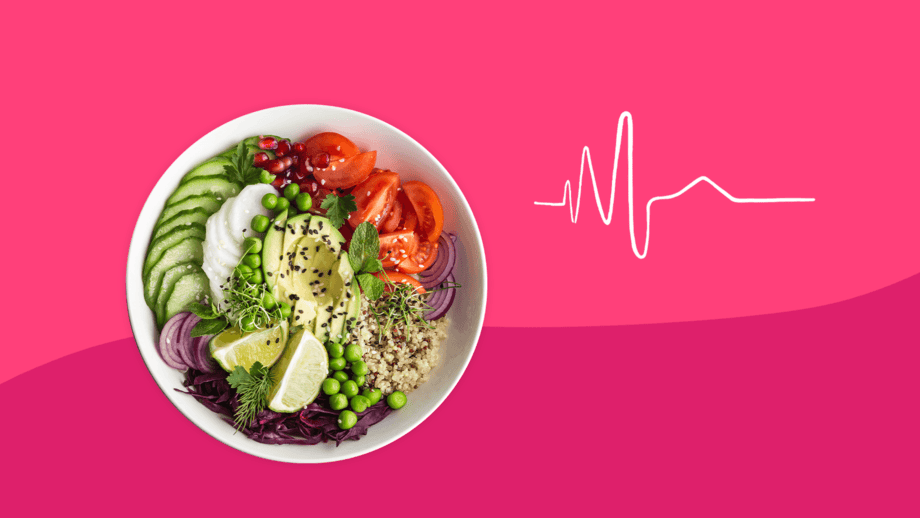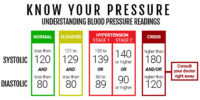How To Manage Hypertension With Dietary Changes?

Hypertension, commonly known as high blood pressure, is a prevalent and significant public health issue affecting individuals worldwide. It is a major risk factor for cardiovascular diseases and contributes to the global burden of morbidity and mortality.
Numerous studies have emphasized the crucial role of dietary factors in the development and management of hypertension. This article aims to provide evidence-based recommendations on how to manage hypertension through dietary changes.
The article will explore the link between diet and hypertension, with a focus on:
- Reducing sodium intake
- Increasing potassium-rich foods
- Limiting alcohol consumption
- Incorporating heart-healthy fats
- Focusing on lean protein sources
- Controlling portion sizes
Additionally, the importance of regularly monitoring blood pressure will be highlighted.
By adopting a comprehensive approach to dietary modifications, individuals can take proactive steps in managing hypertension and improving overall cardiovascular health.
Key Takeaways
- Adopting a vegetarian diet can help manage hypertension by reducing the risk of chronic diseases such as obesity, diabetes, and cancer.
- Portion control is essential for managing hypertension, and strategies such as using smaller plates and bowls and measuring servings accurately can help individuals control their portion sizes.
- Regular blood pressure monitoring is important for effective hypertension management as it helps track changes, assess the impact of lifestyle modifications, and provides valuable information to healthcare professionals.
- Making dietary changes, such as adopting a vegetarian diet and practicing portion control, can have a positive impact on blood pressure levels and aid in managing hypertension effectively.
Understand the Link Between Diet and Hypertension
The relationship between diet and hypertension can be better understood by examining the impact of dietary choices on blood pressure regulation.
Dietary guidelines recommend consuming a diet rich in fruits, vegetables, whole grains, lean proteins, and low-fat dairy products while limiting the intake of saturated fats, sodium, and added sugars. These recommendations are based on scientific evidence that suggests certain dietary factors can influence blood pressure levels.
For instance, excessive sodium intake has been shown to raise blood pressure, while diets high in fruits and vegetables, which are rich in potassium, magnesium, and fiber, have been associated with lower blood pressure levels.
Additionally, the impact of lifestyle factors, such as physical activity and weight management, cannot be overlooked in managing hypertension.
In conclusion, adopting a healthy diet and lifestyle can play a crucial role in managing hypertension and promoting overall cardiovascular health.
Reduce Sodium Intake
To effectively address hypertension, a reduction in sodium intake is crucial. High sodium intake is strongly associated with increased blood pressure levels, placing individuals at a higher risk of developing hypertension.
To reduce sodium intake, individuals can consider the following options:
- Opt for fresh or minimally processed foods, as they generally contain lower sodium levels compared to processed or pre-packaged foods.
- Experiment with sodium alternatives, such as herbs, spices, and vinegar, to add flavor to meals without relying on salt.
- Explore low sodium seasoning options, which are specifically designed to enhance the taste of dishes while minimizing sodium content.
By making these dietary changes, individuals can limit their sodium intake and potentially manage hypertension more effectively. These alternatives not only provide health benefits but also allow individuals to enjoy flavorful meals without compromising their health.
Increase Potassium-Rich Foods
Increasing the consumption of potassium-rich foods can play a significant role in regulating blood pressure levels. A potassium-rich diet is recognized as an effective strategy for managing hypertension. Potassium acts as a vasodilator, promoting the relaxation of blood vessels and reducing the strain on the cardiovascular system. It also helps to balance sodium levels in the body, which is crucial for maintaining healthy blood pressure. Incorporating potassium-rich foods into the diet, such as bananas, avocados, spinach, and sweet potatoes, can help individuals achieve their recommended daily intake of potassium, which is about 3,500 to 4,700 milligrams per day. To provide a clearer understanding, the following table lists some common potassium-rich foods along with their respective potassium content:
| Food | Potassium Content (mg) |
|---|---|
| Bananas | 400 |
| Avocados | 975 |
| Spinach | 840 |
| Sweet Potatoes | 540 |
| Oranges | 240 |
In conclusion, incorporating potassium-rich foods into one’s diet is an essential component of hypertension management.
Limit Alcohol Consumption
Limiting alcohol consumption is an important factor to consider when aiming to regulate blood pressure levels. Excessive alcohol intake can lead to hypertension and other cardiovascular complications. To effectively manage hypertension, individuals should adhere to alcohol restrictions.
Here are some alcohol alternatives to consider:
- Non-alcoholic beverages: Opt for non-alcoholic beer or wine, or explore a variety of alcohol-free cocktails.
- Herbal teas: Replace alcoholic drinks with herbal teas, such as chamomile or peppermint, which have calming effects and promote relaxation.
- Fruit-infused water: Create refreshing and flavorful drinks by infusing water with fruits like lemon, cucumber, or berries.
By replacing alcoholic beverages with these alternatives, individuals can reduce their alcohol intake and subsequently lower their blood pressure levels. It is important to consult with a healthcare professional for personalized advice on managing hypertension through dietary changes.
Incorporate Heart-Healthy Fats
Incorporating heart-healthy fats into one’s diet can contribute to overall cardiovascular health and potentially lower the risk of hypertension and other related complications.
Heart-healthy fats, such as monounsaturated and polyunsaturated fats, are essential nutrients that provide numerous health benefits. These fats can be found in foods like avocados, nuts, seeds, and fatty fish. Consuming these fats in moderation can help increase levels of high-density lipoprotein (HDL) cholesterol, also known as the ‘good’ cholesterol, while decreasing levels of low-density lipoprotein (LDL) cholesterol, or the ‘bad’ cholesterol. This balance is important for maintaining healthy blood pressure levels and reducing the risk of developing hypertension.
Additionally, heart-healthy fats have anti-inflammatory properties, which can further protect against cardiovascular diseases. Incorporating these fats into the diet is a simple yet effective way to manage hypertension and promote overall heart health.
Focus on Lean Protein Sources
This discussion focuses on two key points for managing hypertension through dietary changes: opting for skinless poultry and fish, and choosing plant-based proteins.
Skinless poultry and fish are lean sources of protein that are low in saturated fat, making them a heart-healthy choice for individuals with hypertension.
Plant-based proteins, such as legumes, tofu, and tempeh, are not only low in saturated fat but also rich in fiber, which can help lower blood pressure.
Opt for Skinless Poultry and Fish
Skinless poultry and fish are excellent protein sources for individuals managing hypertension through dietary changes.
Skinless poultry, such as chicken and turkey, is low in saturated fat and cholesterol, making it a heart-healthy choice. It is also rich in essential nutrients like vitamins B6 and B12, which play a crucial role in maintaining overall cardiovascular health.
Additionally, fish, particularly fatty fish like salmon, mackerel, and sardines, are known for their high omega-3 fatty acid content. These omega-3 fatty acids have been associated with a lower risk of developing high blood pressure and may help reduce inflammation and improve blood vessel function.
Including skinless poultry and fish in a hypertension-friendly diet can provide individuals with lean protein options that support heart health and aid in the management of hypertension.
Choose Plant-Based Proteins
Plant-based proteins offer a nutritious and sustainable alternative for individuals seeking to improve their cardiovascular health and make positive dietary choices. Plant-based protein alternatives, such as legumes, tofu, tempeh, and seitan, can provide the necessary nutrients while also reducing the intake of saturated fats and cholesterol often found in animal-based proteins.
Incorporating these plant-based proteins into a vegetarian diet can have numerous benefits for managing hypertension. Studies have shown that a vegetarian diet, rich in plant-based proteins, can significantly reduce blood pressure levels. This is due to several factors, including the lower sodium content in plant-based foods and the presence of beneficial nutrients like fiber, potassium, and antioxidants. These nutrients have been associated with lower blood pressure and improved cardiovascular health.
In addition, plant-based proteins are often lower in calories and saturated fats compared to animal-based proteins. This can help individuals maintain a healthy weight, which is crucial for managing hypertension. Furthermore, a vegetarian diet has been linked to a reduced risk of developing other chronic diseases, such as obesity, type 2 diabetes, and certain types of cancer.
In conclusion, choosing plant-based proteins as part of a vegetarian diet can offer significant benefits for managing hypertension and improving overall cardiovascular health. These alternatives provide essential nutrients, reduce the intake of saturated fats and cholesterol, and promote a healthy weight. Incorporating plant-based proteins into one’s diet can be a nutritious and sustainable approach to managing hypertension.
Control Portion Sizes
To effectively manage hypertension with dietary changes, it is essential to incorporate portion control as a key strategy. Portion control involves being mindful of the amount of food consumed in a meal or snack. By controlling portion sizes, individuals can regulate their calorie intake and maintain a healthy weight, which is crucial for managing hypertension.
Here are three important aspects to consider when practicing portion control for hypertensive individuals:
- Use smaller plates and bowls: Serving meals on smaller plates and bowls can create an illusion of larger portions, tricking the mind into feeling satisfied with less food.
- Measure servings: Using measuring cups or kitchen scales can help accurately determine portion sizes, ensuring that the right amount of food is consumed.
- Practice mindful eating: Paying attention to hunger and fullness cues, eating slowly, and savoring each bite can help individuals become more aware of their portion sizes and prevent overeating.
Incorporating these portion control strategies can assist in managing hypertension and promote overall health and well-being.
Monitor Your Blood Pressure Regularly
Regularly monitoring blood pressure levels is an essential practice in effectively handling hypertension and maintaining optimal health. By frequently checking your blood pressure, you can track any changes and adjust your lifestyle accordingly.
Blood pressure monitoring allows individuals to identify potential triggers and evaluate the effectiveness of lifestyle changes. Regular measurements provide valuable information to healthcare professionals, aiding in the management of hypertension.
Lifestyle changes, such as dietary modifications, exercise, and stress reduction techniques, can impact blood pressure levels. Monitoring blood pressure regularly serves as a tool for assessing the impact of these lifestyle modifications and helps individuals make informed decisions about their health.
By incorporating regular blood pressure checks into their routine, individuals with hypertension can actively participate in their healthcare and take necessary steps to manage their condition effectively.
Frequently Asked Questions
Can hypertension be managed solely through dietary changes, or is medication necessary?
The management of hypertension through dietary changes alone may be effective in some cases, but medication is often necessary for optimal control. Long-term adherence to a healthy diet can have positive effects on hypertension management.
Are there any specific foods or drinks that can help lower blood pressure?
Certain foods and drinks have been found to help lower blood pressure. For example, a diet rich in fruits, vegetables, whole grains, and low-fat dairy products, along with reduced sodium intake, can contribute to blood pressure control. Regular exercise also plays a crucial role in managing hypertension.
How long does it take to see the effects of dietary changes on blood pressure?
The effects of dietary changes on blood pressure can vary, but research suggests that significant changes in blood pressure can be seen within a few weeks to a few months. Exercise also plays a crucial role in managing hypertension.
Are there any alternative dietary approaches to managing hypertension, such as the DASH diet?
Alternative dietary approaches for managing hypertension include the DASH diet and the Mediterranean diet. The Mediterranean diet has shown benefits in reducing blood pressure due to its emphasis on fruits, vegetables, whole grains, lean proteins, and healthy fats.
Can dietary changes alone completely eliminate the need for blood pressure medication?
Dietary changes alone cannot completely eliminate the need for blood pressure medication. However, they play a crucial role in managing hypertension and reducing medication dosage. Lifestyle modifications, including dietary changes, are important for overall blood pressure control.







